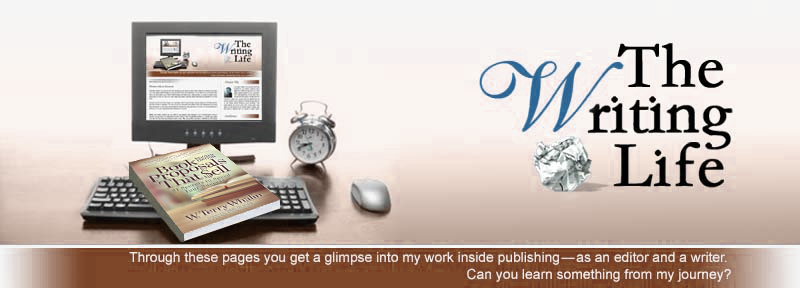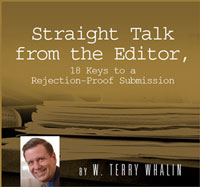Use the Lucky Seven
Recently I wrote about a new how-to book, Writers On Writing edited by James N. Watkins. This book is a compilation of publishing insights in different areas of writing from various Christian authors. One of my long-term friends, Karen Ball, wrote an excellent chapter, “Self-Editing Fiction” which may be worth the price of the entire book. One bookcase in my office holds my writing books and I have over 250 books. Admittedly over the years, I’ve had to clear out some older titles to keep it contained to one bookshelf. If I find one solid tip inside a book which I can apply repeatedly to my writing, then the book becomes valuable. Often these books contain many more than one tip.
Karen Ball is the executive editor of fiction at Zondervan Publishing House. Besides editing many bestselling novelists, Karen writes her own bestselling fiction. I’ve always enjoyed hearing her speak. I’m going to highlight what she calls the Lucky Seven or seven self-editing fiction checkpoints. I know you thought editors edit your work after you turn it into the publisher (and they do) but editors also expect their authors to deliver the best possible effort. Often everyone in the publishing process is facing incredible deadlines and volumes of material to quickly process. One key for this rush process is for the writer to build time into their schedule for a solid self-edit. Before she gives her seven points, Karen includes a key caveat, “When you write, just write. Don’t let your internal editor out to play until you’re done writing. If you try to edit and write at the same time, you’ll drive yourself even crazier than normal.” For any writer, there is a clear distinction between the creative—and the writer. Separate these functions and for this entry, I’m highlighting the self-editing portion.
I’m only going to list the different points where this chapter includes great illustrations (often where the points will make the most sense and greatest application to your own writing life).
Checkpoint One: “Only use speaker attributions when absolutely necessary. When is that? When you have more than one speaker, so the reader may confuse who is saying what, or when you have a run of dialogue that goes more than a few lines.”
Checkpoint Two: “Let your dialogue speak for itself. Make sure your speaker attributions, aren’t telling readers what emotions your characters are experiencing rather than showing them through dialogue or action.”
Checkpoint Three: “Don’t let the dreaded -ly adverbs get your story down! Most adverbs just don’t belong, not in speaker attributions or text.”
Checkpoint Four: “Watch out for words that weaken!…99.9 percent of the time, it’s best to just say no to superlatives and modifiers.”
Checkpoint Five: “Don’t be done unto. Avoid the passive voice.”
Checkpoint Six: “Just the facts, ma’am! Don’t use exposition in either dialogue or narrative if there’s no real reason to share the information.”
Checkpoint Seven: “Strong hooks. Don’t leave home — or a chapter or even a scene — without ‘em. Hooks keep the pages turning; they create a sense of anticipation, dread, excitement, fear, or whatever.”
If you follow this sage advice, it will not solve every editorial problem in your fiction. Your editor will still have plenty of other things to do with your book. Your self-editing time will result in stronger storytelling and may gain you a hearing from the editor or a literary agent in the first place.





















3 Comment:
I ordered my copy! Looking forward to learning from these writing professionals.
I agree, Karen's brilliant. And a heck of a nice lady. I'll put that book on my wish list. Thanks Terry for sharing!
Great points, concisely presented. Thanks!
Camy
Post a Comment
That's the writing life...
Back to the home page...